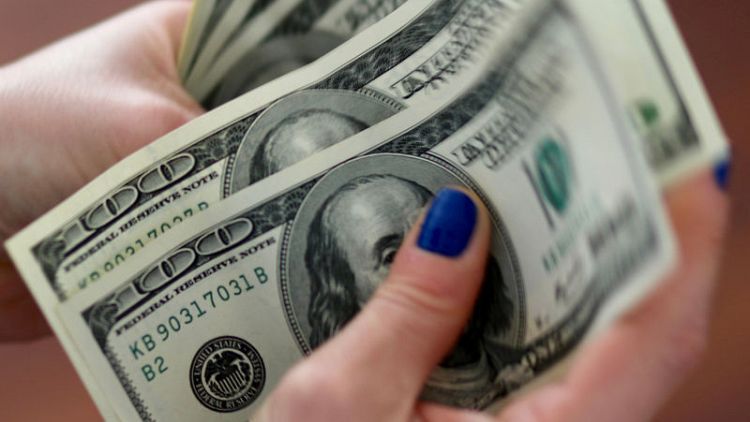By Tom Finn
LONDON (Reuters) - The dollar fell to a seven-week low against a basket of major currencies on Thursday as concerns about the impact of a trade row between China and the United States ebbed.
Currency markets have become more settled since reacting strongly to new tariffs announced by Washington and Beijing on Tuesday.
Traders say they do not expect the dispute to produce a sharp global shock, at least for now, and foresee any fallout taking some time to filter through to corporate earnings.
U.S. economic data has remained strong, and the dollar has tended to act as a safe-haven trade, gaining as tensions between Washington and Beijing escalate. On Thursday it slid 0.3 percent to 94.217 <.DXY>, its lowest since July 31.
Emerging market currencies strengthened, led by the Indian rupee after China said it would not retaliate with competitive devaluations.
For some market participants, the dollar retains underlying strength.
"It is the champion reserve currency and it has the risk-free Fed funds rate. So the currency with the lowest risk is offering the highest yield in G10," said Andreas Koenig, global head of FX at asset manager Amundi.
The Federal Reserve is next week expected to raise benchmark borrowing costs and shed more light on the future rate path.
NORWEGIAN CROWN SLUMPS
Closer to home, European markets were watching events at an EU summit where UK Prime Minister Theresa May appealed to her counterparts on Wednesday to drop demands for a Brexit deal that she said could rip Britain apart.
Sterling has strengthened recently on optimism that Britain and the European Union can make significant progress towards a Brexit deal at the summit.
On Thursday it rallied 0.4 percent to a two-month high of $1.3236 after UK retail data beat forecasts.
The Norwegian crown meanwhile slumped more than 1 percent versus the euro after the country's central bank raised interest rates for the first time in seven years, as expected, but trimmed its rate forecasts.
The crown fell to 9.6150 <EURNOK=D3> and dropped half a percent versus the dollar to 8.1970. <NOK=D3>
The safe-haven franc was little changed after the Swiss central bank kept its ultra-loose monetary policy in place on Thursday, citing a "fragile" exchange rate and rising international trade tensions and protectionism.
The SNB has sought to stem investor appetite for the franc over the last three and-a-half years.
"Short term, the SNB might be able to prevent franc appreciation with the help of interventions, but no doubt it would not manage to do so long term," said Commerzbank currencies strategist Ulrich Leuchtmann.
The euro was 0.4 percent against the weaker dollar at $1.1721. <EUR=EBS>
The Australian dollar, a proxy for China-related trades as well as a barometer of broader risk sentiment, held at three-week highs, having gained 1.5 percent so far this week. It stood at $0.7268 <AUD=D4>.
(Reporting by Tom Finn; editing by Keith Weir and John Stonestreet)



